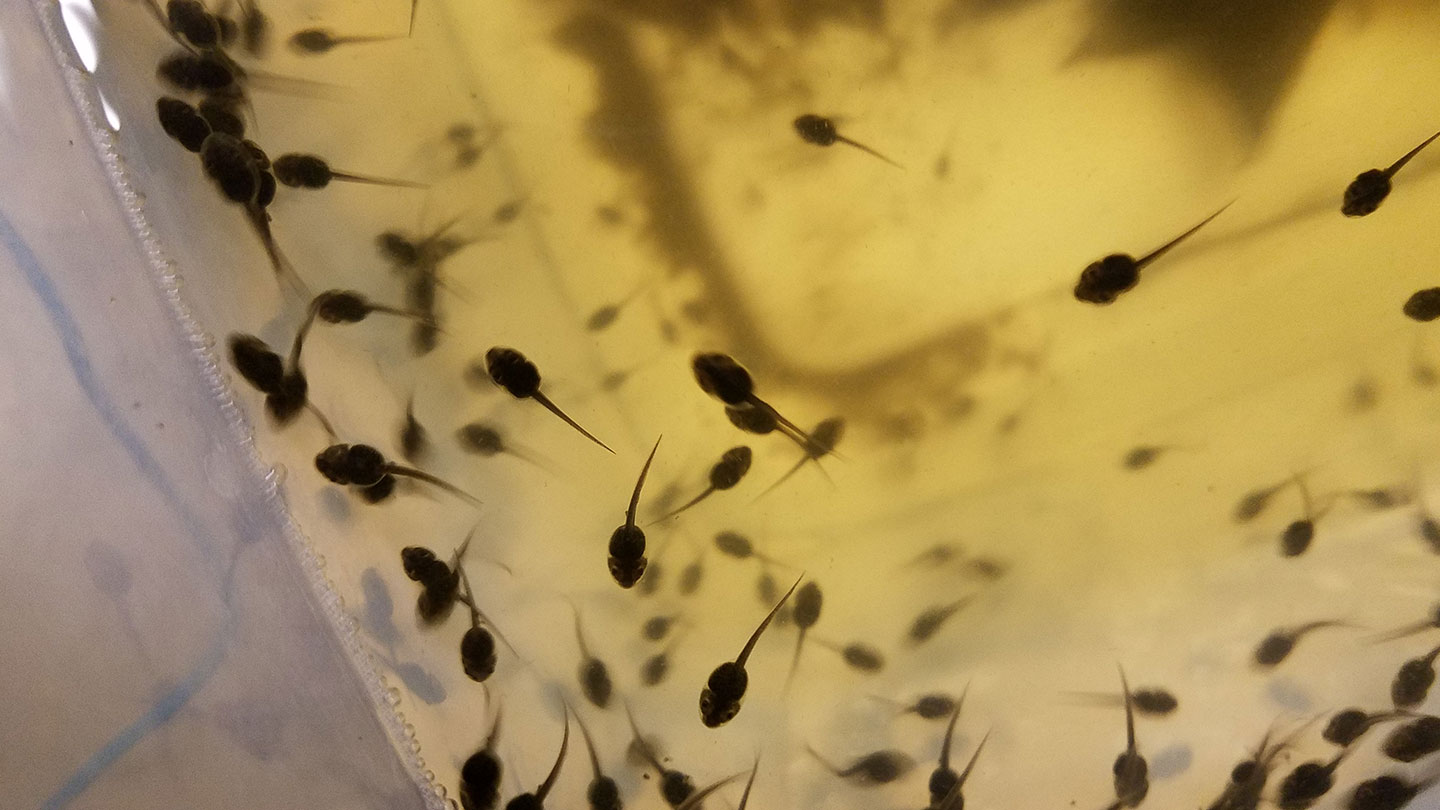Some of a green frog’s heat tolerance might come from its microbiome.
But when scientists transferred the gut microbiome of a green frog (Lithobates clamitans) to the eggs of a wood frog (L. sylvaticus), the wood frog larvae could handle short stints at higher water temperatures, Jason Dallas and colleagues report September 7 on bioRxiv.org. The study reveals one reason some species might be more, or less, sensitive to climate change.
Green frogs and wood frogs are closely related but lead different lives. Wood frogs go from egg to adult in only three months in the spring. Green frog larvae can remain as tadpoles through the whole summer, swimming in higher water temperatures as a result. Dallas, a herpetologist at Middle Tennessee State University in Murfreesboro, was particularly interested in the frogs’ critical thermal maxima — the hottest temperature at which the animal can continue to move.
“Amphibians [and] reptiles are globally imperiled, but still remain understudied,” Dallas says, and it’s not clear just how their microbiomes contribute to how they live their lives. To find out what role the microbiome might play in frog temperature tolerance, Dallas headed out to a local wetland in early spring in search of wood frog eggs. Timing is key. “They’ll breed, and it’ll all be over in basically one or two nights,” he says. “The next day you go, [and] there’s hundreds of egg masses, if not thousands.”
2023-09-29 07:00:00
Post from www.sciencenews.org
rnrn
